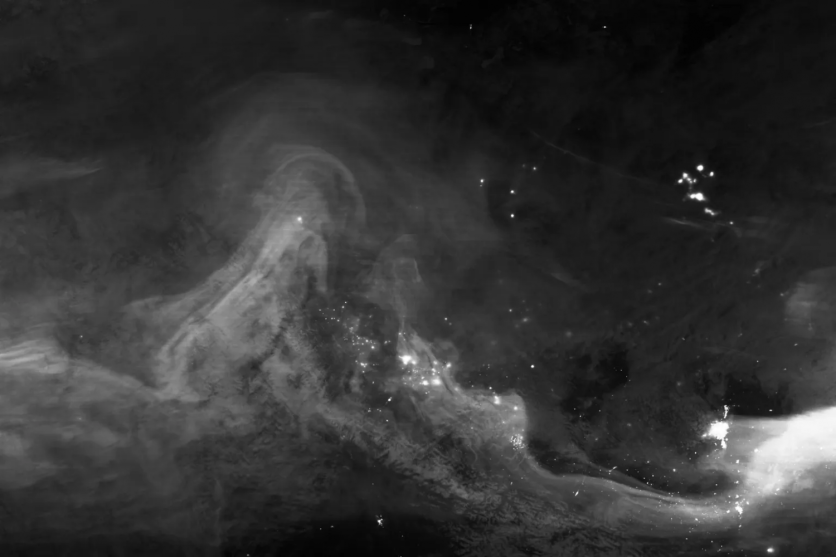Unveiling the ethereal beauty of the aurora borealis in a unique light, NASA's Visible Infrared Imaging Radiometer Suite (VIIRS) instrument aboard the NOAA-NASA Suomi National Polar-orbiting Partnership (Suomi NPP) satellite captured a mesmerizing spectacle over western Canada last November 5 at 5:23 a.m. EST.
Unlike conventional images of auroras that showcase vibrant bands of color dancing across the night sky, this satellite view provides a dazzling portrayal of the auroral glow in infrared light, offering a fresh perspective on this celestial phenomenon.

Auroras Are Captivating Ribbons of Light
Auroras are captivating ribbons of light that grace the night sky, brought to life by intense geomagnetic storms within Earth's magnetosphere.
According to NASA, the captivating display observed over western Canada resulted from multiple coronal mass ejections from the sun, unleashing a surge of charged particles toward our planet.
Upon colliding with Earth's magnetosphere, some of these particles become trapped in the magnetic field, propelling them into the upper atmosphere. In this high-altitude realm, the charged particles excite nitrogen and oxygen molecules, triggering the release of photons of light, manifesting as the vivid hues of the aurora.
Scientifically, auroras are visible manifestations of the interaction between the solar wind-charged particles emanating from the sun and Earth's magnetosphere. The Aurorasaurus project encourages individuals to contribute to the scientific understanding of these phenomena by reporting aurora sightings, which aids scientists in their modeling efforts.
These natural light shows, often called "northern lights" or "southern lights," result from magnetic storms triggered by solar activity, such as solar flares or coronal mass ejections. Energetic charged particles propelled by these solar events make their way to Earth, causing substorms when they breach the magnetosphere.
Read Also : NASA's Perseverance Marks 1,000th Day on Mars, Robotic Rover Unravels Ancient History of Martian Lake
'Auroral Oval'
As these charged particles collide with Earth's atmosphere, particularly with oxygen and nitrogen particles in the thin, upper atmosphere, the atoms emit light, creating the vibrant colors that characterize the auroras.
Spacecraft imagery has provided unparalleled views of these displays, revealing a continuous ring of aurora, or "auroral oval," which are bands encircling polar caps.
The magnetic field lines associated with these auroral ovals extend into the magnetosphere's tail, known as the "magnetotail." The intricate dance of these field lines is a fascinating phenomenon, with connections seemingly interweaving infinitely in our solar system.
NASA noted that observing the Aurora Borealis or Aurora Australis is an uncommon and fortunate event, given that these exhibitions present dynamic and visually intricate manifestations resulting from solar-induced magnetic storms. Apart from their enchanting beauty, auroras also function as an early signal of our planet encountering the impact of its celestial neighbor, the Sun.
Related Article : NASA's Hubble Space Telescope Captures 'Butterfly Nebula' In Stunning Motion | Fun Facts About This Beautiful Space Butterfly

ⓒ 2025 TECHTIMES.com All rights reserved. Do not reproduce without permission.




